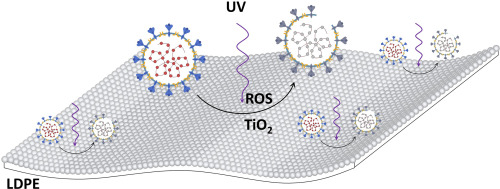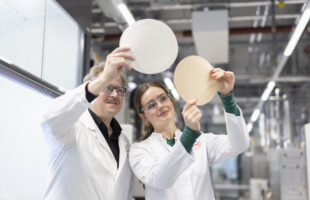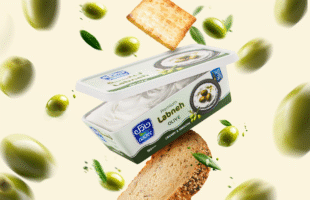
Courtesy of Queen's University Belfast
- Production of a flexible, thin, photocatalytic plastic film by extrusion
- Film activated using UVA
- Tested using two influenza viruses, encephalomyocarditis virus, and SARS-CoV-2 (SARS2)
- All measured average virus inactivation rates >1.5log/h with UVA and cool white light
- SARS2 particularly prone to photocatalytic inactivation even under very low UV irradiation conditions.
Researchers from the Queen’s University Belfast developed a plastic film that can kill the SARS2 virus particles that land on its surface even in room light.
Scientists were able to produce a self-sterilising low-density polyethylene (LDPE) with nanoparticles of titanium dioxide. These particles can kill viruses, such as those that cause the dreaded COVID-19, when exposed to ordinary lighting. This material, a first of its kind, is affordable to produce and scalable for use in tablecloths, aprons, and even food packaging and production.
Researchers said the thin coating absorbs the UV light and produces ROS (reactive oxygen species) that kills viruses. According to them, film production technology ensures that plastic is degradable.
“This film could replace many of the disposable plastic films used in the healthcare industry, as it has the added value of being self-sterilising at no real extra cost,” said Professor Andrew Mills.
“Through rigorous testing, we have found that it is effective at killing viruses with just room light — this is the first time that anything like this has been developed and we hope that it will be a huge benefit to society.”
The self-sterilizing plastic film was tested for anti-viral activity against four different viruses — two strains of influenza A virus, a highly-stable picornavirus called EMCV, and SARS2. The film was exposed either to UVA radiation or light from a cool white light fluorescent lamp. The researchers found that the film is effective at killing all of the viruses, even in a room lit with just white fluorescent tubes.
During their simulation in controlled laboratory conditions, scientists placed about one million virus particles on the self-sterilizing plastic, far more than would be needed to start an infection.
“It goes from one million viruses down to nothing, and we can see an effect in less than one hour and maximum death in two hours,” Dr Connor Bamford of the school of medicine at Queen’s University Belfast told the BBC.
“To our knowledge, this is the first example of a flexible, very thin, photocatalytic plastic film, produced by a scalable process (extrusion), for virus inactivation,” write the researchers in a paper published in the Journal of Photochemistry and Photobiology B: Biology.
The project was funded by the Engineering and Physical Research Council, which is part of UK Research and Innovation.








